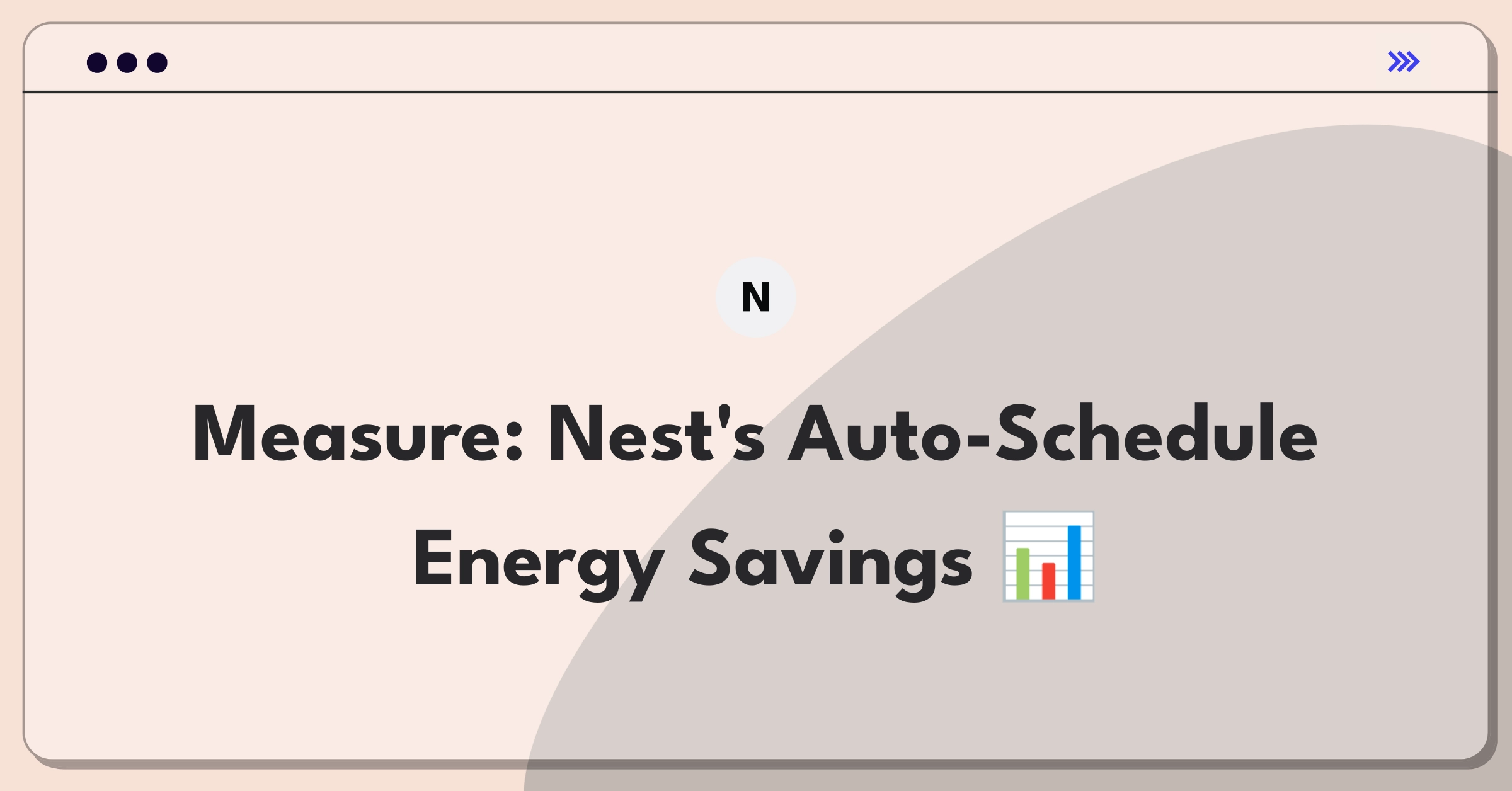Introduction
Measuring the success of Nest's thermostat auto-schedule feature requires a comprehensive approach that considers multiple stakeholders and metrics. This product success metric framework will cover core metrics, supporting indicators, and risk factors while addressing the needs of users, the business, and technical considerations.
Framework Overview
I'll follow a simple success metrics framework covering product context, success metrics hierarchy, and strategic initiatives.
Step 1
Product Context
Nest's thermostat auto-schedule feature is a smart home technology that learns users' temperature preferences and routines to automatically create an energy-efficient heating and cooling schedule. Key stakeholders include homeowners seeking comfort and energy savings, utility companies interested in load management, and Nest (Google) aiming to expand its smart home ecosystem.
The user flow typically involves:
- Initial setup and manual adjustments
- Learning period where the thermostat observes patterns
- Automatic schedule implementation with ongoing refinement
This feature aligns with Google's broader strategy of creating an interconnected smart home ecosystem and promoting energy efficiency. Compared to competitors like Ecobee or Honeywell, Nest's auto-schedule is often considered more advanced in its learning capabilities.
As a mature product in the growth stage of its lifecycle, the auto-schedule feature faces challenges in continual improvement and maintaining its competitive edge.
Hardware considerations:
- Sensor accuracy and reliability
- Integration with HVAC systems
- Power efficiency of the device itself
Software considerations:
- Machine learning algorithms for pattern recognition
- Cloud infrastructure for data processing and storage
- Regular firmware updates to improve functionality
Subscribe to access the full answer
Monthly Plan
The perfect plan for PMs who are in the final leg of their interview preparation
$66.00 /month
- Access to 8,000+ PM Questions
- 10 AI resume reviews credits
- Access to company guides
- Basic email support
- Access to community Q&A
Yearly Plan
The ultimate plan for aspiring PMs, SPMs and those preparing for big-tech
- Everything in monthly plan
- Priority queue for AI resume review
- Monthly/Weekly newsletters
- Access to premium features
- Priority response to requested question


.png)